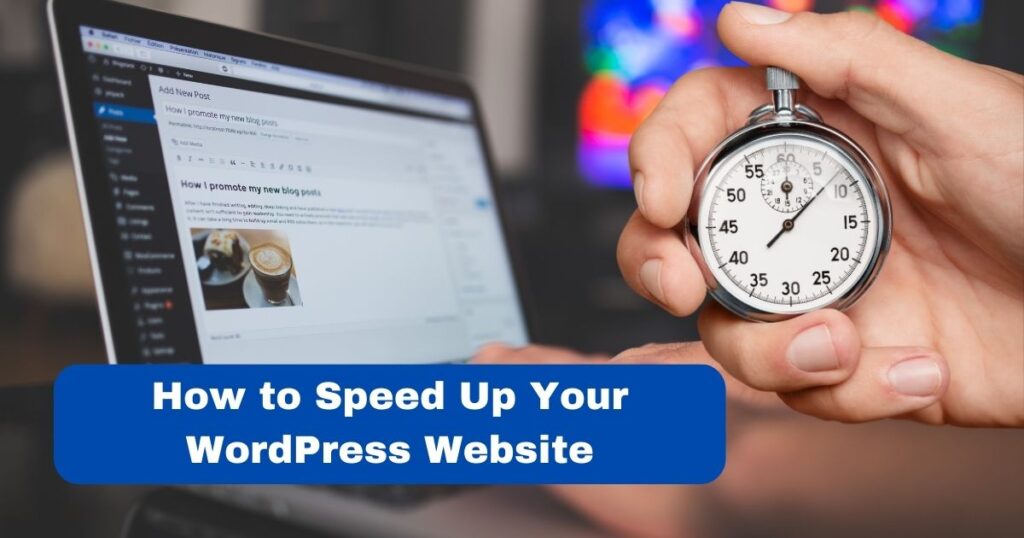
WordPress is one of the most popular website platforms in the world, powering millions of websites across the internet. However, if your website is slow, it can negatively impact user experience, search engine rankings, and ultimately, your bottom line. In this article, we’ll explore various ways to speed up your WordPress website.
- Choose a good hosting provider
Your hosting provider plays a crucial role in determining the speed of your website. Choosing a good hosting provider with fast servers and reliable uptime is essential. Shared hosting plans may be cheap, but they can also slow down your website due to server overload. Consider upgrading to a dedicated or VPS hosting plan if you have a large website with high traffic.
- Use a lightweight WordPress theme
The theme you use can also impact the speed of your website. Some themes come with lots of features and functionality that you may not need, making them slower. Choose a lightweight WordPress theme that is optimized for speed and performance. A simple and clean theme with minimal features is often the best option.
- Optimize your images
Images can take up a lot of space on your website, causing it to load slowly. Optimize your images by compressing them without sacrificing quality. Use image compression tools such as TinyPNG, Imagify, or ShortPixel to reduce the size of your images.
- Use a caching plugin
A caching plugin can significantly speed up your website by storing a static version of your website’s pages. This means that when a user visits your website, the cached version is served instead of generating the page from scratch. Popular caching plugins for WordPress include W3 Total Cache and WP Super Cache.
- Minimize HTTP requests
HTTP requests are made every time a page on your website is loaded. The more HTTP requests, the slower your website will be. Minimize HTTP requests by removing unnecessary elements such as scripts and stylesheets. Use a plugin such as WP Minify to combine and compress your scripts and stylesheets into a single file.
- Use a content delivery network (CDN)
A content delivery network (CDN) can speed up your website by storing a cached version of your website’s content on servers located in different parts of the world. This means that when a user visits your website, the content is served from the nearest server, reducing the load time. Popular CDN providers for WordPress include Cloudflare and MaxCDN.
- Enable Gzip compression
Gzip compression is a technique that compresses your website’s files before sending them to the user’s browser. This can significantly reduce the size of your website’s files and speed up the load time. Most modern web servers support Gzip compression, but you may need to enable it in your website’s settings.
- Optimize your database
Your WordPress database can become cluttered with unnecessary data over time, slowing down your website. Optimize your database by removing unused data such as post revisions, spam comments, and trashed items. Use a plugin such as WP-Optimize to clean up your database automatically.
- Limit your plugins
Plugins can add a lot of functionality to your website, but they can also slow it down. Limit the number of plugins you use to only those that are essential. Deactivate and delete any plugins that you no longer use.
- Use lazy loading
Lazy loading is a technique that loads images and other media only when they are needed, rather than loading them all at once. This can significantly reduce the load time of your website, especially for pages with lots of images. Use a plugin such as Lazy Load or Jetpack to enable lazy loading on your website.
Conclusion
Speed is a critical factor for the success of your WordPress website. By implementing the above tips, you can significantly speed up your website, improve user experience, and ultimately, increase your website’s traffic, engagement, and conversions. Remember that website speed is a continuous process and requires ongoing monitoring and optimization. Regularly check your website’s speed and performance using tools like Google PageSpeed Insights, Pingdom, or GTmetrix, and make necessary adjustments. By keeping your website optimized for speed, you can provide a better user experience and stay ahead of the competition.
